Michelangelo’s Hidden Secrets Under The Medici Chapel
Ellen Lloyd - AncientPages.com - The European Renaissance period spanned between the 14th and 17th centuries. It was a fascinating moment in the history of the European continent. Western civilization was transformed, and great artists were born, but there were also frequent struggles between the Catholic Church, artists, scientists, kings, queens, and those with power and money.
Left: The dome of the Cappella dei Principi dominates the San Lorenzo architectural complex. Credit: Public Domain; Right: Portrait of Michelangelo by Daniele da Volterra. Credit: Public Domain
Being a talented artist had its advantages and disadvantages. One man whose works were praised on some occasions, only to be questioned later, was the great painter Michelangelo (1475 – 1564).
Famous for his beautiful frescoes, Michelangelo painted the Sistine Chapel’s ceiling between 1508 and 1512. This Renaissance masterpiece is one of Michelangelo's most famous works. Some researchers who studied this work of art suggest Michelangelo was hiding secret messages in the ceiling of the Sistine Chapel.
Michelangelo was also said to have inserted hidden Pagan symbols associated with female anatomy in his famous Medici Chapel work.
The Medici were powerful Renaissance Godfathers, patrons of the Church, and many artists. Being a very rich family, they obtained control over much of Florence. During their time, there was a vague distinction between science and magic. Many famous scientists were very interested in the occult, and the Church was annoyed.
The Catholic Church was constantly questioned and struggled to remain powerful. Although the Medici family were patrons of the famous Galileo Galilei, they could not protect him from being arrested.
Catherine de Medici shared her family’s great love for art. She was also interested in astronomy, astrology, architecture and there were rumors she was fascinated with occult knowledge. She was a great supporter of Nostradamus (1503 – 1566). As a devout Catholic, Nostradamus drew heavily on Biblical allusions and prophecies. Nostradamus maintained a good relationship with the Church, but Michelangelo was not so lucky.
The Medici Chapel in Florence, Italy, where Michelangelo worked on the New Sacristy upon the request of Cardinal Giulio de Medici, the future Pope Clemens VII, was intended to serve as a mausoleum for the Medici family.
Only much later did we discover that the building also became a hiding place for some of his works.
In 1529, Michelangelo joined many inhabitants in Florence who had grown tired of the dominant Medici family and the Pope. Questioning the Church and the Medici family, who Michelangelo depended on as an artist, was not wise. Still, he was hoping for a more democratic system of governance.
Pope Clement VII, who was a Medici, was displeased with Michelangelo, who at the time was working to help fortify the city walls against Medici-friendly forces led by the Pope himself. It took ten months for the Pope and the Medici family to win the battle against their enemies, who were punished immediately. When the Florentine Republic fell in August, the troops were told to arrest Michelangelo and lock him in the Bargello, then the city prison.
Three months before the end of the conflict, Michelangelo managed to find a hiding place so he was never punished for his uprising against the Italian authorities.
A 19th-century photograph of the interior of the Cappella dei Principi - Credit: Public Domain
In November 1530, the Pope and the Medici family announced Michelangelo could return and finish his work on the Chapel. They promised he wouldn’t be punished. Michelangelo emerged from his hiding place and was once again on good terms with the Medici family.
But where had he been hiding all those months? Michelangelo’s hiding place had remained a secret for almost 500 years. Most thought the great artist sought refuge in a church tower or stayed with a friend.
However, this was not the case. Ironically, Michelangelo decided to hide where no one expected to find him; in the Medici Chapel!
In 1976 the director of the Museum of the Medici Chapel discovered a very small secret room where the walls were covered with 180 unknown sketches.
It soon became clear that Michelangelo, one of the greatest Renaissance artists, spent three months sitting in the darkness with nothing to do except create sketches using charcoal and sienna red crayon.
Many of Michelangelo’s drawings are larger than life-size.
The room where Michelangelo spent his three months is today rarely opened. Occasionally it's possible to visit it but keep in mind the place is so small that only 12 people are allowed in every half hour.
Updated on April 8, 2023
Written by Ellen Lloyd – AncientPages.com
Copyright © AncientPages.com All rights reserved. This material may not be published, broadcast, rewritten or redistributed in whole or part without the express written permission of AncientPages.com
Expand for referencesMore From Ancient Pages
-
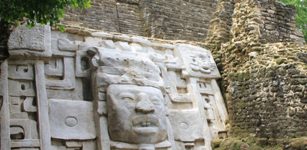 Lamanai, Belize: One Of The Largest And Oldest Maya Cities Dated To 1500 BC
Civilizations | Nov 2, 2018
Lamanai, Belize: One Of The Largest And Oldest Maya Cities Dated To 1500 BC
Civilizations | Nov 2, 2018 -
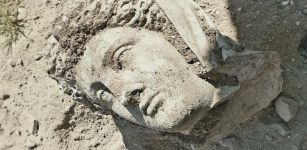 3rd-Century Statue Discovered In Ancient City Of Perge, Antalya, Turkey
Archaeology | Jul 28, 2020
3rd-Century Statue Discovered In Ancient City Of Perge, Antalya, Turkey
Archaeology | Jul 28, 2020 -
 More Than 60,000 Ancient Maya Structures Obscured By Inaccessible Forest Revealed By LIDAR
Archaeology | Sep 29, 2018
More Than 60,000 Ancient Maya Structures Obscured By Inaccessible Forest Revealed By LIDAR
Archaeology | Sep 29, 2018 -
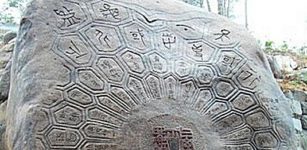 Giant Turtle-Shaped Rock Wangsan, Korea – One Of The Strongest Sources Of “ki”
Featured Stories | Jun 24, 2015
Giant Turtle-Shaped Rock Wangsan, Korea – One Of The Strongest Sources Of “ki”
Featured Stories | Jun 24, 2015 -
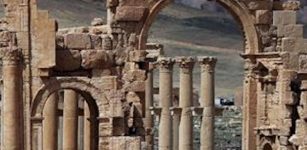 Arch Of Triumph In 2000-Year-Old City Of Palmyra – Destroyed
Archaeology | Oct 5, 2015
Arch Of Triumph In 2000-Year-Old City Of Palmyra – Destroyed
Archaeology | Oct 5, 2015 -
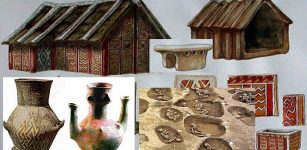 Lengyel Culture Of Neolithic Europe Was Amazingly Sophisticated
Civilizations | Apr 7, 2020
Lengyel Culture Of Neolithic Europe Was Amazingly Sophisticated
Civilizations | Apr 7, 2020 -
 North America’s First Languages Originate From Siberia
Linguistic Discoveries | Apr 10, 2024
North America’s First Languages Originate From Siberia
Linguistic Discoveries | Apr 10, 2024 -
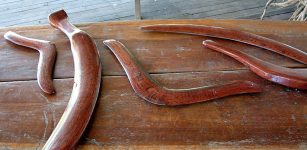 Boomerangs Were Used To Shape Stone Tools By Aboriginal People
Archaeology | Aug 16, 2022
Boomerangs Were Used To Shape Stone Tools By Aboriginal People
Archaeology | Aug 16, 2022 -
 Pre-Columbian People Of The Amazon Altered Their Landscape Thousands Of Years Earlier Than Previously Thought
Archaeology | Jun 14, 2021
Pre-Columbian People Of The Amazon Altered Their Landscape Thousands Of Years Earlier Than Previously Thought
Archaeology | Jun 14, 2021 -
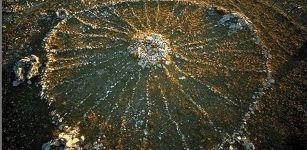 Bighorn Medicine Wheel: Sacred Site And Ancient Solar Observatory
Civilizations | May 29, 2016
Bighorn Medicine Wheel: Sacred Site And Ancient Solar Observatory
Civilizations | May 29, 2016 -
 Were Owl-Shaped Plaques Children’s Toys In Copper Age?
Archaeology | Dec 1, 2022
Were Owl-Shaped Plaques Children’s Toys In Copper Age?
Archaeology | Dec 1, 2022 -
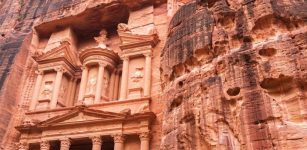 Researchers Sequenced 137 Human Genomes From The Middle East
Archaeology | Aug 6, 2021
Researchers Sequenced 137 Human Genomes From The Middle East
Archaeology | Aug 6, 2021 -
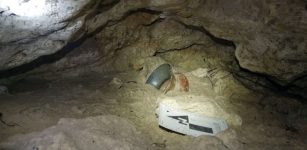 Completely Intact 2,000-Year-Old ‘Chocolatier Style’ Pot Discovered In Mexican Cave
Archaeology | Jul 30, 2022
Completely Intact 2,000-Year-Old ‘Chocolatier Style’ Pot Discovered In Mexican Cave
Archaeology | Jul 30, 2022 -
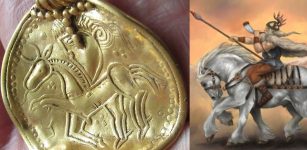 Discovered Gold Pendant Of Odin And His Horse Sleipnir Might Be Linked To The Heruli Tribe
Archaeology | Apr 16, 2016
Discovered Gold Pendant Of Odin And His Horse Sleipnir Might Be Linked To The Heruli Tribe
Archaeology | Apr 16, 2016 -
 Mysterious Giant Rock Face Discovered On B.C’s Central Coast – Natural Or Man-Made Structure?
News | Mar 28, 2020
Mysterious Giant Rock Face Discovered On B.C’s Central Coast – Natural Or Man-Made Structure?
News | Mar 28, 2020 -
 Iktomi – Native American Spider-Trickster Spirit Whose Stories Teach Moral Values
Featured Stories | Jan 28, 2019
Iktomi – Native American Spider-Trickster Spirit Whose Stories Teach Moral Values
Featured Stories | Jan 28, 2019 -
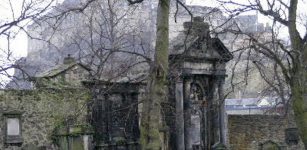 Mysterious Greyfriars Kirkyard: A Cemetery In Edinburgh With Dark And Spooky History
Featured Stories | Sep 16, 2016
Mysterious Greyfriars Kirkyard: A Cemetery In Edinburgh With Dark And Spooky History
Featured Stories | Sep 16, 2016 -
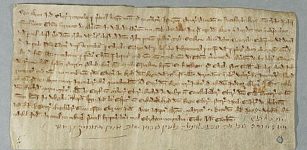 York’s Thriving Medieval Jewish Community – New Study
Archaeology | Aug 22, 2023
York’s Thriving Medieval Jewish Community – New Study
Archaeology | Aug 22, 2023 -
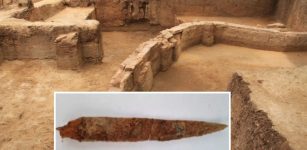 Rare Well-Preserved 2,500-Year-Old Dagger Linked To The Keeladi Civilization Discovered In Tamil Nadu, India
Archaeology | Aug 13, 2021
Rare Well-Preserved 2,500-Year-Old Dagger Linked To The Keeladi Civilization Discovered In Tamil Nadu, India
Archaeology | Aug 13, 2021 -
 Remains Of A 2,300-Year-Old Sunken Ship Discovered At Alamein Shore
Archaeology | Aug 12, 2023
Remains Of A 2,300-Year-Old Sunken Ship Discovered At Alamein Shore
Archaeology | Aug 12, 2023


